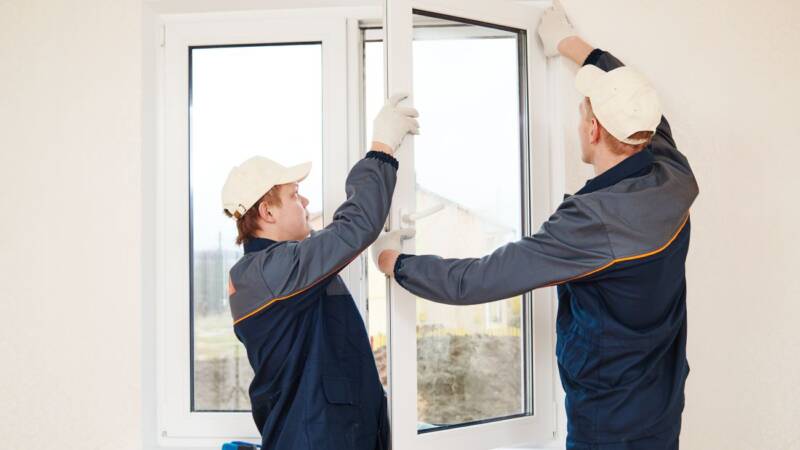A Guide to Upgrading Your Windows

Upgrading your windows can increase the market value of your home, but that isn’t the only benefit. If done correctly, it can save you money in the long run by making your home more energy-efficient. Thus, lowering your energy bills.
Fortunately, with a little guidance, upgrading your windows is quite easy.

Check to See If You Need to Upgrade Your Windows
Upgrading your windows can be quite the endeavour. So, it’s important to make sure you actually need to upgrade them in the first place. It’s likely worth upgrading your windows if you notice any of the following:
- You Have Trouble Opening or Closing the Window: Other than pure annoyance, this could be indicative of an older frame that could face more trouble down the road.
- Your Window Is Visibly Damaged: If your window is visibility damaged, it’s probably a good idea to upgrade/replace it.
- You Can Hear Noise Through the Window: This could be a sign that the window’s seals are broken.
- Your House Feels Colder/Warmer or More Draughty Than Usual: This could mean that your windows aren’t adequately blocking the outside elements. This could potentially cause your HVAC to work harder — raising your energy bills in the process.
- Condensation on the Inside the Window: Water damage could eventually result in more serious damage.1
Research and Prepare to Upgrade Your Windows
Before making the big purchase, it’s important to understand everything that goes into upgrading your windows. So, you can make the best decision possible.
There are four elements that are important to consider before upgrading your windows.
1. Frame Material
The cost of your upgraded windows will depend on the frame material you choose. In order of least expensive to most expensive, the most common materials are:
- uPVC: Not only is this material durable, it’s also the most affordable.
- Aluminium: While slightly more expensive, aluminium can is sturdy and rust-resistant.
- Wood: The most rustic-looking and expensive material of the bunch, wood is a fan-favorite that can be painted to fit with most themes.2
2. Types of Window
Different types of windows complement different types of homes. The different types of windows include:
- Casement Windows: Traditional, European-looking windows.
- Flush Casement Windows: Windows more suited for period properties
- Sliding Sash Windows: A more energy-efficient version of traditional sashes.
- Tilt and Turn Windows: Contemporary, functional, and easy to clean.
- Coloured uPVC Windows: An easy way to add class and color to your property.
- Aluminium Windows: A modern and minimal addition to any home.3
If you’re not comfortable choosing a type of window that suits your home yourself, you can always look at how your neighbors match their homes or consult a window installation expert.
3. Types of Glass
Firstly, there are three levels of glazing to consider for your upgraded windows: single, double, and triple glazing. Single glazing is the least energy-efficient and cheapest option, while triple glazing is the most energy-efficient and expensive option. Although triple glazing is the most expensive option, it can save you money in the long run.
Beyond glazing, there are the following types of glass to consider:
- Annealed or Float Glass: The most common and cost-effective option for double glazing.
- Toughened or Tempered Glass: A safe option for families as it shatters into dull crystals when broken.
- Laminated Glass: Another safe and secure option that prevents shattering.
- Coated Glass: Allows natural light in without as much glare.
- Tinted or Coated Glass: Keeps out excess sunlight and radiation heat.
- Noise-Reducing Glass: Reduces noise and quiets your home.
- Self-Cleaning Glass: For those not wanting to clean their windows all the time.
- Decorative Glass: An aesthetic addition offering different textures, designs, and colours.4
4. Finishing Colour
While elaborately matched color schemes will undoubtedly improve the appearance of your home, certain colours cost more than others when it comes to windows and frames.
Standard colours, such as white uPVC or grey for aluminium, are usually the most cost-effective option, whereas more colorful options may cost you more. Additionally, the material of your windows can affect the price of certain colors.
Calculate the Cost of Upgrading Your Windows
With all the information you need to put together a plan to upgrade your windows in place, the final step is consider the costs associated with your plan.
Window Purchasing
The price you pay when purchasing your new windows depends on the following factors:
- Material: uPVC, aluminium, or wood.
- Size: 700mm x 1200mm and 1800mm x 1200mm are common.
- Style: Casement, sash, fixed, tilt & turn, etc.
- Glazing: Single, double, or triple.
- Openings: How many and what kind.
Window Fitting
Aside from purchasing your windows, you typically have to pay an additional cost to have someone come to your home and fit them. Fitting costs can vary based on factors like window style, potential access issues, and regional labour costs.
Since fitting a window can cost a fair bit, it’s important to see what discounts you may qualify for. Some providers offer discounts in exchange for things like installing multiple windows at once.
To ensure you get the best and most accurate price possible, it’s always best to have multiple providers check out your property in person and provide you with a quote before ultimately settling on one.
Now We Hand It Over to You
Taking it all in, upgrading your windows might sound intimidating. However, when you consider the benefits in the long run, upgrading your windows is one of the best things you can do for your home.